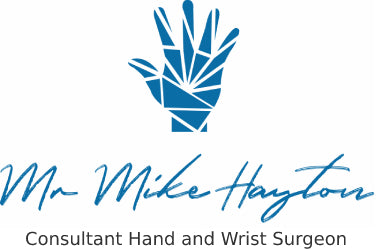Hand operations that require a surgical wound need closing at the end of the operation. There are many different types of stitches that a surgeon can use. We often refer to the stitches as sutures.
There are two broad groups of skin sutures used in hand surgery. Absorbable (dissolvable) or non absorbable.
Non Absorbable
Non absorbable stitches are usually coloured, either black or blue. Non absorbable skin sutures require removal at 10 days post op. The thickness of the suture depends on a number of factors. These include the thickness of the skin, surgeon preference and location of the wound. In my practice, I use as fine a suture as possible.This has the advantage of a better scar and less irritation whilst the sutures are in place.
Absorbable
Generally absorbable sutures are clear or white in colour. They are often buried by threading the suture under the skin edges and are only visible as threads coming out of the ends of the wound. The suture end will need snipping flush with the skin at about 10 days. Sometimes the whole suture is completely buried, as shown in this photograph. These wounds are often reinforced with steristrips (butterfly stitches). Each type of absorbable suture dissolves at different rates. Some start to disappear at 10 days, others at 3 months.

